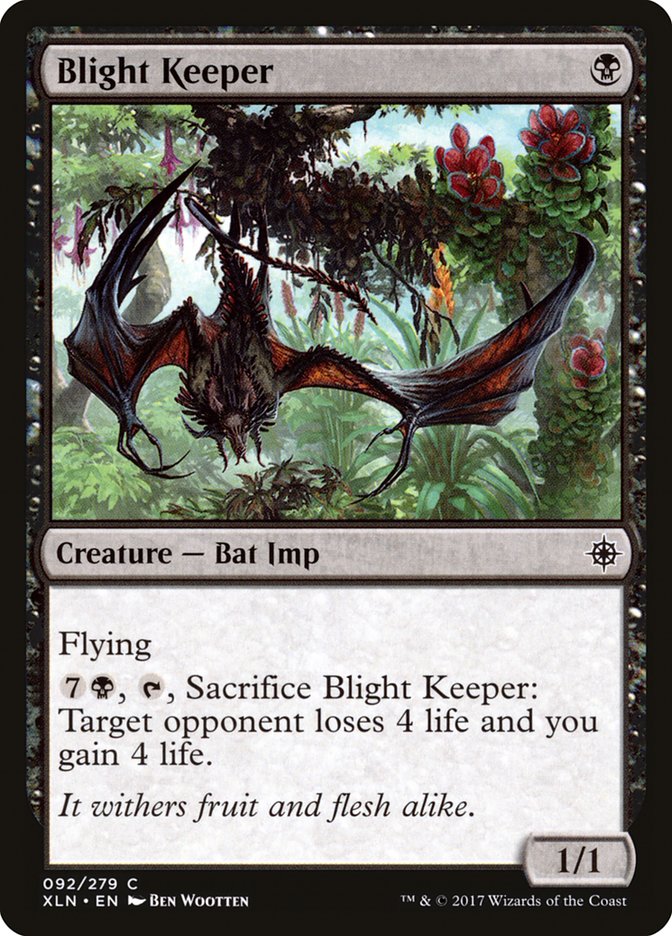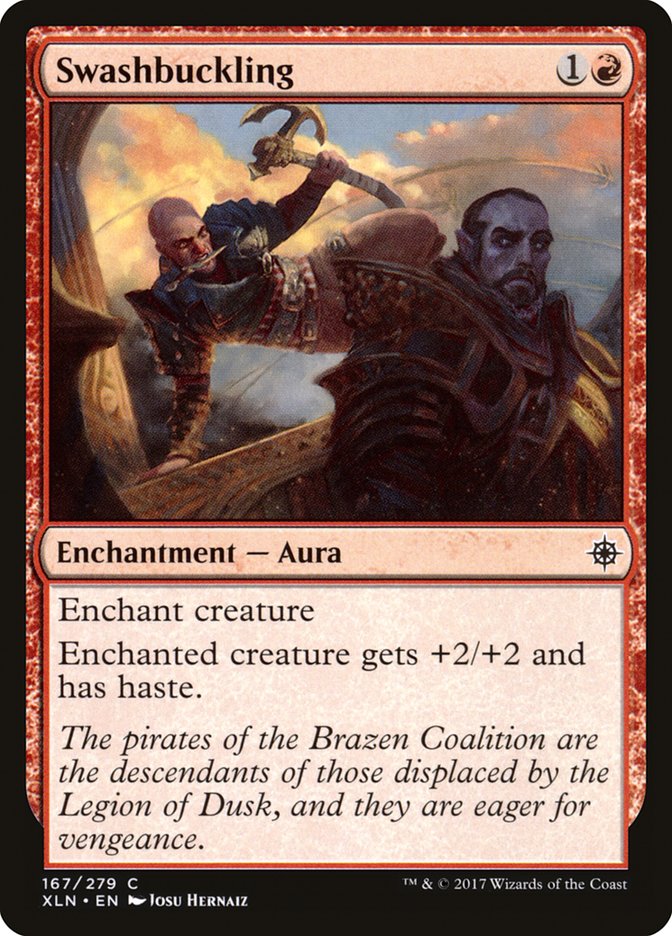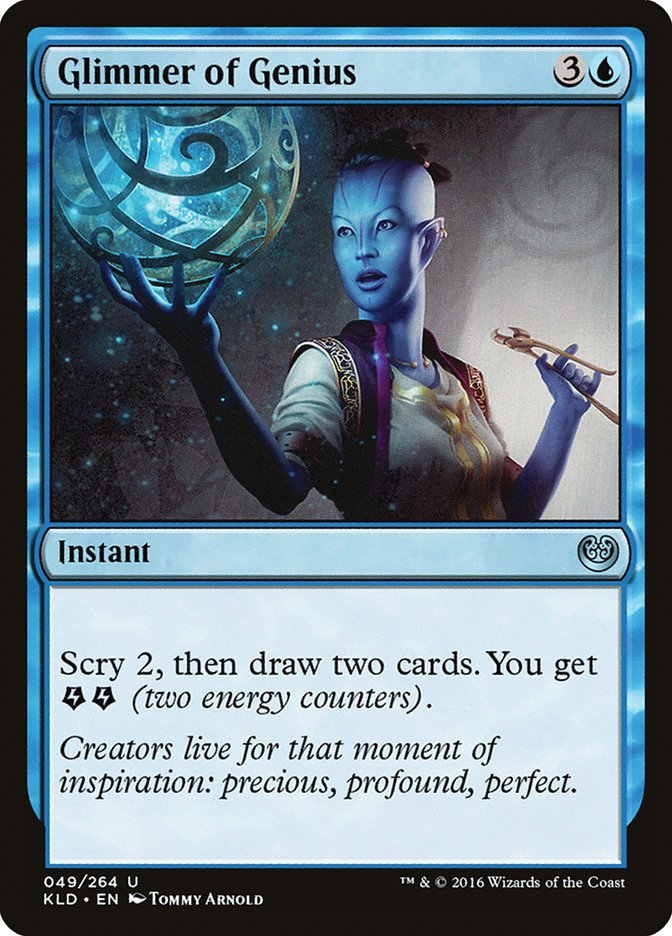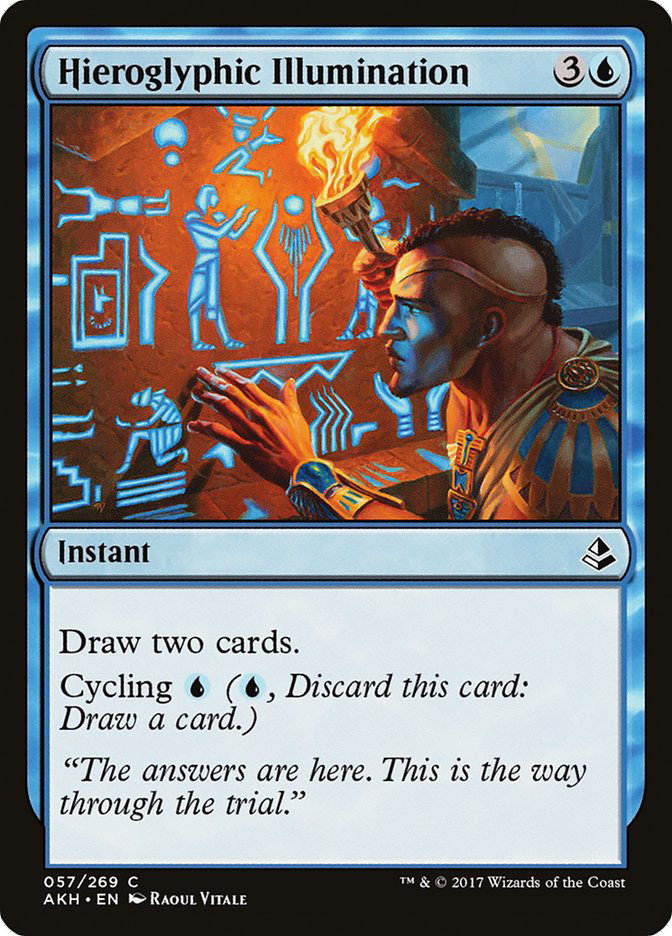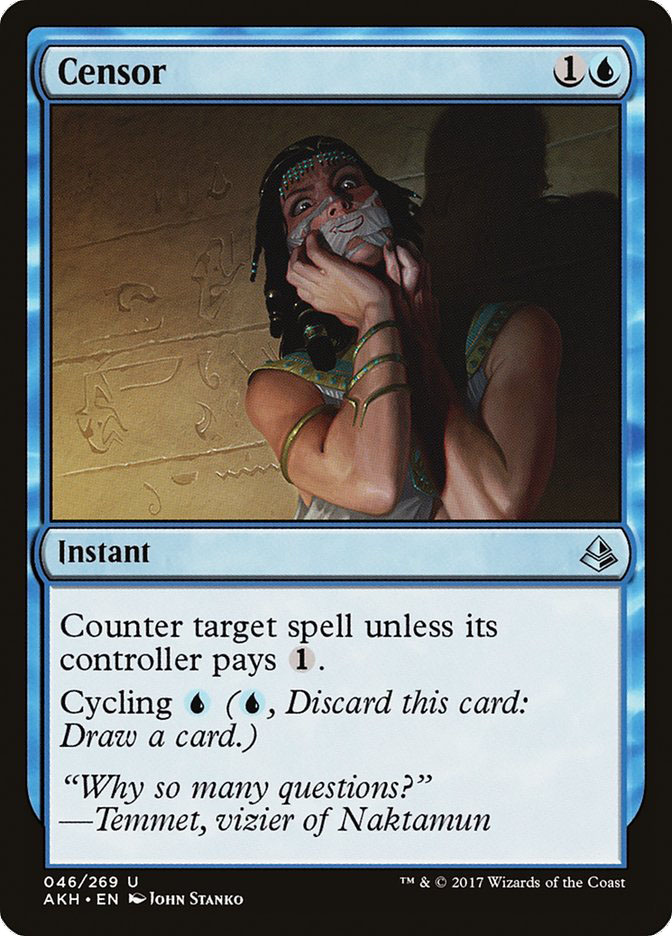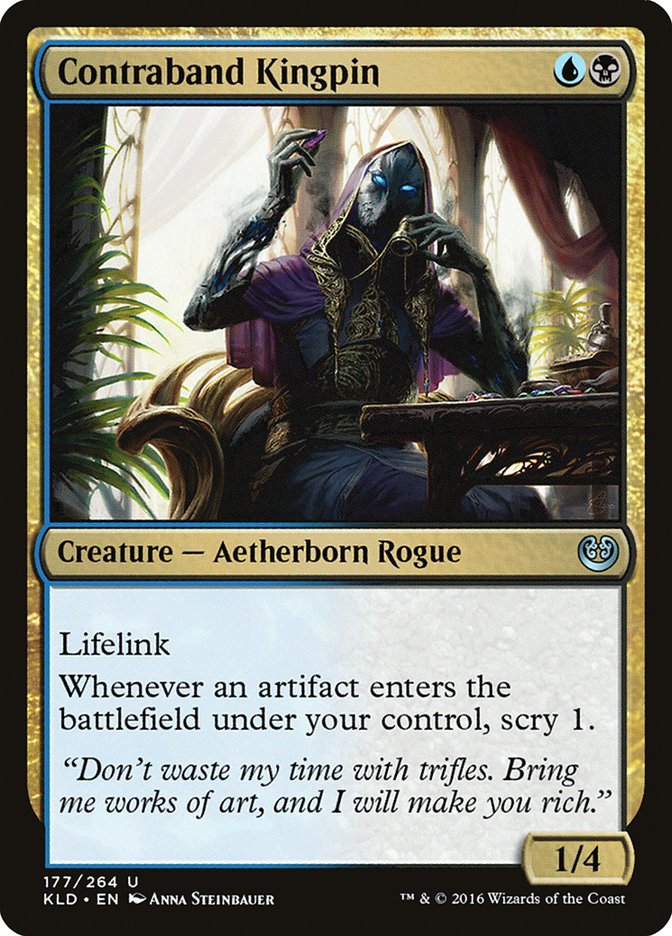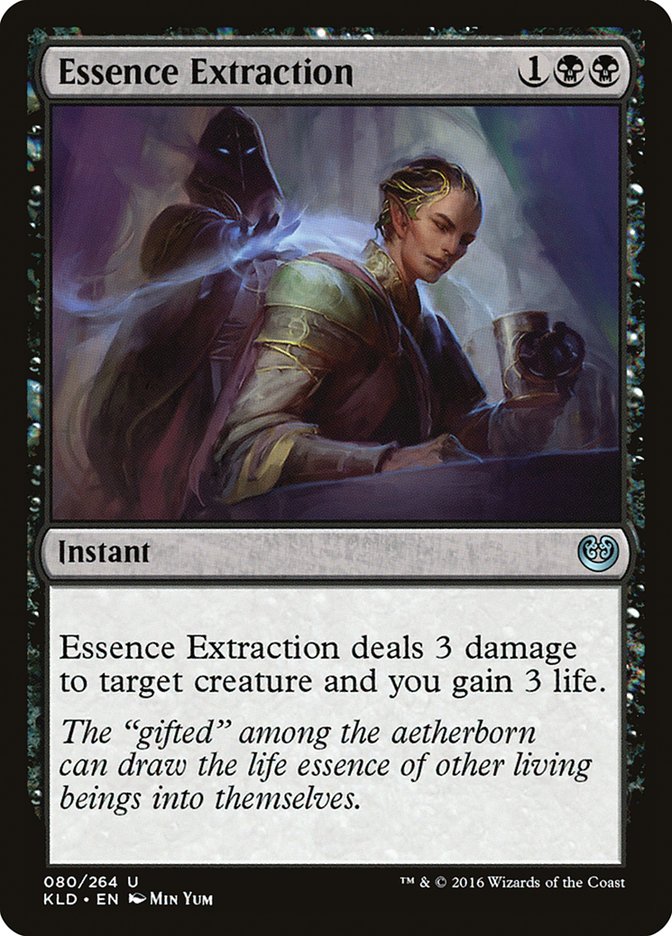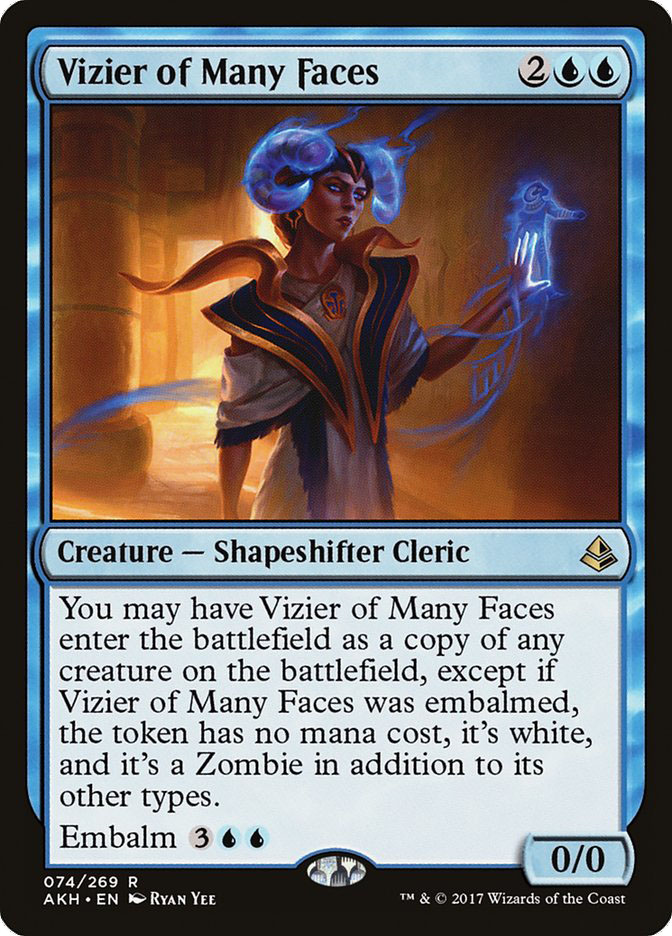
I prepared for the World Championship with Josh Utter-Leyton, Gerry Thompson, and Martin Juza. We met at Josh’s place in Denver the week before GP Providence because he was the only one of us who had a day job and he had room to put the rest of us up, and so we tested there so that he could join us when he wasn’t at work. I got there later than the others, staying Madison for the Prerelease and to get a few live drafts in while finishing some business at home and waiting for flights to get cheaper. When I got there, they’d also mostly been playing Limited.
By the time I got there, basically everyone in the pro community on Twitter had concluded that Ixalan wasn’t a great Limited format. The issue is that the removal is pretty weak, and there aren’t really any engines or mana sinks like River Hoopoe or Sunset Pyramid.
The incentive to go late is basically just to play bigger creatures, but there’s a decent amount of hard removal and good combat tricks, so it’s actually a lot easier to profitably interact with an expensive creature than a cheap creature, so the format basically rewards everyone for drafting the lowest-curve aggro deck they can with good tricks and Auras. Christian Calcano showcased the pinnacle of this line of reasoning with his 3-0 in the first draft at the World Championship with a bunch of Blight Keepers and Swashbucklings.
Beyond that, the drafts feel pretty scripted: stay open as long as it feels safe/necessary, settle into the open tribe, and take cards that fit that tribe when possible, or take the cheapest available trick. Removal gets taken in here somewhere; for me, I either take it early in an attempt to stay open or avoid it, favoring cheaper tempo plays, but I suspect others value it a little more highly.
This was how the format looked to me after my first draft, after my third draft, after my tenth draft, etc. I kept drafting pretty often online to make sure I hadn’t missed anything for the first week in Denver, but by the weekend, I’d moved onto Standard and didn’t bother doing another draft because it just didn’t feel like there was anything else to learn. We disagreed a little about exactly which tribes we wanted to be, but for the most part, I think we agreed that the open tribe is the best tribe.
As for Standard, the evening that I got there, Josh had been looking at a U/B Control deck with his local friend and coworker Patrick Chapin, and they were arriving at some interesting conclusions. They didn’t like Supreme Will or Glimmer of Genius. I advocated for more Vraska’s Contempts and Search for Azcanta. They built the deck and we didn’t touch it for a few days.
I tried to make myself play a bit of Standard basically every day to try out my ideas and figure out what other people were doing. I started with Anointed Procession decks with a Ruthless Knave / Marionette Master kill. Ruthless Knave was impressive with Anointed Procession and horrible otherwise. Dire Fleet Hoarder was serviceable filler, and I liked how easy it was to kill people with Marionette Master out of nowhere if I had some Treasure lying around.
As people started getting a lot of 5-0 results on Magic Online with a more controlling take on Anointed Procession, I realized the bad creatures were a liability and that the deck didn’t need a dedicated finisher. It took me a little longer to realize that it was basically just a prison deck, not some weird combo aggro/value deck.
Thinking about it that way, I thought it might be good, and I tried it as late as the Wednesday before the World Championship, but it just felt a little too unreliable. It’s so much better when it draws Hidden Stockpile than when it doesn’t, and it has a really hard time with people who can actually answer enchantments.
I played a couple of matches with Vizier of the Anointed, but it also felt a little too clunky. Eventually, I decided I should try playing some games with U/B Control.
I went 4-0 in the first League I played (it’s customary when preparing for a big event with a team to drop at 4-0 rather than risk having a list posted) and it felt extremely easy compared to the wins I’d been getting with Anointed Procession. I joked that I was ready to lock it in at that point, but I basically was.
After playing just a few matches with the deck, I understood exactly how messed up it is.
I genuinely have no idea how development let this deck slide. It’s everything they say they don’t want control decks to be. You have so many fantastic counterspells and such versatile removal that you can easily just trade cards until your opponent runs out of things to do, and then either reload or drop a finisher as your hand dictates. The deck has no bad cards, and every card is among the best ever at doing what it does. And all of that is before I even get started on Search for Azcanta.
The maindeck I started with was maybe three cards off of the list I played at the World Championship. I settled on this:
Creatures (5)
Lands (26)
Spells (29)

I don’t think Harsh Scrutiny and Supreme Will are great in the deck. Josh and Gerry played Essence Extraction. I didn’t like using Evolving Wilds to fix for 1UU and 1BB on Turn 3. Gerry played Submerged Boneyard instead, but I think it’s too important to have Evolving Wilds to revolt Fatal Push and fill the graveyard for Search for Azcanta, so I wanted cheap interaction that didn’t cost BB and those were the best I could find (Kelvin Chew played maindeck Aether Meltdown instead, which I think is horrible).
Online I’d been playing Glimmer of Genius over the third Torrential Gearhulk, but Josh and Gerry told me that I needed three Torrential Gearhulks if I wanted to be able to actually kill a control opponent in Game 1 after playing some games of the mirror. I trusted them, but I’m not that convinced that they were right at the moment. I really liked having the one Glimmer of Genius to Flashback with Torrential Gearhulk, but I feel very happy with the decision to play Hieroglyphic Illumination over them.
On that point, I think there were a few important things that we did differently from other control decks, all of which were basically about recognizing the importance of Search for Azcanta and what it means for your deck construction.
I don’t think of Search for Azcanta as “a card in my U/B Control deck.” I think of my deck as a “Search for Azcanta deck.” I’ve been saying that I played the deck because they reprinted Bitterblossom, so I had to play it. It feels remarkably similar. It’s a two-mana enchantment that allows you to just trade off your other cards and then it wins the game by itself on around Turn 6 (although, in the case of Search for Azcanta, the game doesn’t actually end for another eight turns or something).
When you have an active Search for Azcanta, you don’t want to find cards that let you spend mana to get more cards because you can already do that every turn, and you don’t want to find counterspells that your opponent can pay mana to prevent because you’re expecting them to have a lot of lands on the battlefield as you go into a late-game, so you don’t want your deck filled with things like Glimmer of Genius and Supreme Will.
If my opening hand has four lands, Search for Azcanta, and Hieroglyphic Illumination, I’m planning to cycle Hieroglyphic Illumination on Turn 1, something I wouldn’t normally expect to do if my opening hand had four lands, because I just want to fill my graveyard and make sure I can interact with my opponent as early and often as possible at that point. You can’t do that with Glimmer of Genius, which is why it’s worse.
Hieroglyphic Illumination and Censor do exactly what I said I don’t want in my Search for Azcanta deck, but because of cycling, they’re actually the perfect cards for the deck. Early, they provide effects that I want if I don’t have Search for Azcanta or they cycle to fill my graveyard quickly, and late, they cycle cheaply to help make sure that I keep hitting lands while Search for Azcanta generally finds spells.
Our respect for Search for Azcanta also pushed us to play three Field of Ruin, where others had been playing zero or one. Having so many colorless lands in our deck meant that we had to play more tapped lands, which meant adding Evolving Wilds to our deck, but this meant that we had seven more lands that went to our graveyard and triggered revolt, which meant that our Fatal Pushes were better and our Search for Azcantas flipped sooner while also giving us a huge edge in the mirror, where it would be extremely difficult for our opponents to stick their own Azcanta, the Sunken Ruin.
The exact right number and mixture of finishers is an interesting question for the deck. The Scarab God and Torrential Gearhulk are both fantastic cards, and it’s really easy to beat a surprising number of opponents by casting two counterspells and a removal spell in the first four turns and then casting The Scarab God on Turn 5; however, if you play enough of them that you can regularly do that, sometimes you draw multiples, and that means you don’t have enough early interaction, so you play maybe one counterspell and one removal spell instead, and then your opponent has a battlefield presence, and then if they can answer the Scarab God, you can find yourself too far on the back foot and lose. When I tried playing three, I felt like this was happening more often than the opposite case, where I would lose because I didn’t have a finisher and the game just had to go longer.
What I found was that this deck turns “there are no wrong threats, only wrong answers” on its head. The answers in this deck are so versatile that you can easily trade all of them for your opponent’s cards, and the nature of the format is such that every aggressive deck has to play answers.
Because their answers are dead draws, but their deck is designed to draw one to two of them in the early-game and more as the game goes on, most of the time, after you and your opponent hand just traded threats and answers from your opening hand, you have them covered with an extra removal spell and you’re drawing into card draw, Search for Azcanta, and threats that basically win the game on the spot. This means that I’m pretty comfortable being threat-light. The only reason I played as many as I did, as I mentioned, was so that I wouldn’t just literally run out against control decks
This is the major difference in how I approached the deck from Gerry Thompson, who saw himself as closer to playing a “The Scarab God deck” than a “Search for Azcanta deck.” He believed the power was coming from the finisher more than from the engine, and he wanted to keep the battlefield small and then play a threat that most opponents folded to. Effective, but it just felt slightly less reliable in the games I played.
The other major disagreement I had with my teammates, and the last thing we resolved, was the sideboard, specifically Contraband Kingpin and how to beat red decks.
Josh and Gerry tested the matchup against each other, and felt like it was pretty bad; then they played it with Contraband Kingpin and said that that card was good and the matchup felt okay. So I played a League with four Contraband Kingpins in my sideboard instead of Essence Extraction. I played a game where I drew three of them and my opponent played a bunch of cards that made it so that my cards couldn’t block and eventually played Chandra, Torch of Defiance and beat me, and I said I didn’t like them. They also didn’t like Search for Azcanta in the matchup, and just wanted to try to kill their red opponents with The Scarab God.
I settled on a different approach. I brought in four Essence Extraction and a Torrential Gearhulk (yes, that card was in my sideboard specifically for Ramunap Red, even though it feels weird to bring in a six-drop for that matchup) and cut my Disallows and just tried to gain life while killing their creatures. I described my post-sideboard configuration as “Lightning Helix tribal.”
My teammates had four Essence Extraction also, but because they had Contraband Kingpin and only three Vraska’s Contempts, they had to leave in Disallow to stop Chandra from killing their Kingpin, while I was just planning to let Chandra resolve and then exile it. The problem with leaving Disallow in the deck is that, the way the hands play out, you have to be able to trade Disallow for a threat, which often means taking a hit from a creature that you could Essence Extraction so that you can cast Disallow instead and then using the Essence Extraction later. Making plays like this ends up costing a lot of life, and obviously you’re a lot better off if you can preserve more of your life against a red deck.
Vizier of Many Faces is maybe the sideboard card I’m happiest about because it’s just such a hilariously good answer to the card that was clearly printed and hyped to beat this kind of deck, Carnage Tyrant. It allows you to answer two of them while making advantageous exchanges on mana, which is just absurd, and it can usually do a similar job with Bristling Hydra, a similarly concerning threat that people actually put in their decks.
All in all, when I saw the field, I loved our deck choice and our card selection for the tournament. We knew the deck was beatable. There were cards it had a lot of trouble answering, like Hidden Stockpile and Arguel’s Blood Fast, but we correctly predicted that no one in the World Championship would actually play Hidden Stockpile. Gerry did a great job of predicting the metagame based on what he knew of each of the individual players’ deck preferences, and that let us target our control deck more precisely than you can often get away with this early in a format.
Going into the Top 4, I thought Josh Utter-Leyton had the best chance to win the tournament. It didn’t work out, but I’m thrilled that Huey Jensen’s the champion. At a player party before the tournament started, people asked me which player has the highest combination of Magic play skill and niceness, and I felt Huey was the clear answer, so to my mind, there couldn’t be a better winner for the tournament.


